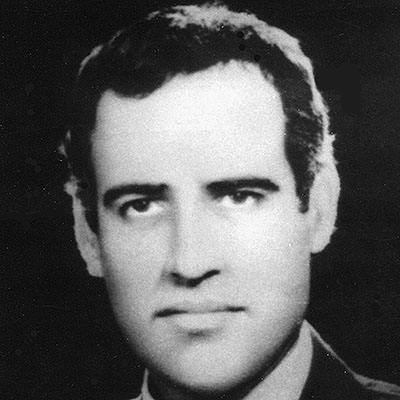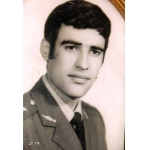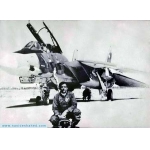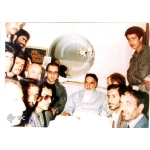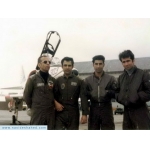Aal-Aqa، Muhammad-Hashem
Author: Masoumeh Abedini
251 بازدید
During the Iran-Iraq War, Muhammad-Hashem Aal-Aqa (1945-1984) served as the head of the Central Command Division of the Islamic Republic of Iran Air Force. Born on November 18, 1945, in Kermanshah, he completed his primary and secondary education and graduated from high school in mathematics. In 1965, he began studying at the Iran Army Ground Forces military academy. After completing various military training, he graduated in 1968 with the rank of Second Lieutenant. He then chose to pursue a career in the aviation section and, on July 30, 1969, joined the Islamic Republic of Iran Air Force for preliminary pilot training.
On November 10, 1970, Aal-Aqa went to the United States to pursue advanced pilot training courses where after 220 hours of flying different aircrafts including the T-41, twin-engine jet T-37, and supersonic T-38 he returned to Iran earning an aviator badge.
From 1971 to 1974, he served as a rear fighter pilot, a F-4 Phantom front cockpit trainer, an aircraft command instructor, and the operational deputy commander of the fighter team at Mehrabad 1st Tactical Air Base, Shiraz 8th Tactical Air Base, and Hamedan 3rd Tactical Air Base.
In 1974, following the acquisition of the F-14 aircraft by the Islamic Republic of Iran Air Force, Aal-Aqa who had been chosen to take the F-14 pilot training was sent to the United States for a six-month pilot course. In 1977, he returned to Iran and one year later was promoted to the rank of Major.
On June 22, 1980, Aal-Aqa was appointed as the operational deputy commander of the Bushehr 6th Tactical Air Base.
With the onset of the Iran-Iraq War, he was tasked with conducting aerial patrol missions with a F-4 aircraft, defending the Iranian airspace throughout West Azerbaijan and Khark Island. He also played an active role in protecting commercial ship convoys moving along the Strait of Hormuz to the Imam Khomeini (ra) Port. Due to his capabilities and determination in fulfilling his duties, he was promoted to the rank of Lieutenant Colonel on July 26, 1981, and was moved to the Shiraz 8th Tactical Air Base. His efforts in defending the country against the enemy air attacks from the northernmost to the southernmost operational areas, as well as protecting and escorting oil tankers, led to his promotion to the rank of Permanent Lieutenant Colonel on April 21, 1982. On August 7, 1982, due to his competence and expertise, he was appointed as the Director of Operations at the Deputy Operational Command of the Islamic Republic of Iran Air Force.
On May 1, 1983, given his capability, innovation, and military discipline in defending the country, Colonel Muhammad Hashem Aal-Aqa became the head of the Central Command Division of the Islamic Republic of Iran Air Force.
Finally, on August 11, 1984, during a battle with Iraqi Baathist forces attacking commercial ship convoys near the Mahshahr Port, Aal-Aqa’s aircraft crashed while conducting an overseas mission and he went missing in action. Seven years later, a committee was set up whose members included high-ranking representatives of the Islamic Republic of Iran Air Force. Based on operational reports, including those from accompanying pilots, surveillance posts, the initial report from the Central Command Division of the Islamic Republic of Iran Air Force, and after reviewing the reports of the International Red Cross, the Iranian Red Crescent Society, and the Commission for the Support of Iranian Prisoners of War in Iraq no information was found indicating that he is in Iraq as a war prisoner. Consequently, the commission members unanimously announced his martyrdom in accordance with Paragraph A of Article 107 of the Law of the Islamic Republic of Iran Army, officially recognizing August 11, 1984, as the date of his martyrdom.
According to the regulations of the Islamic Republic of Iran Army, he was given the rank of Brigadier General and honored with receiving the Fath Medal.
Muhammad-Hashem Aal-Aqa had one son.[1]
[1] Reference: A Summary of an article published in the Sacred Defense Encyclopedia, Vol. 1, Tehran, The Center of Encyclopedia of the Sacred Defense Research Institute, 2011, Pp. 189-190.


